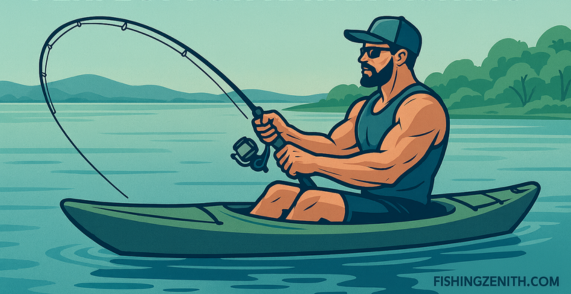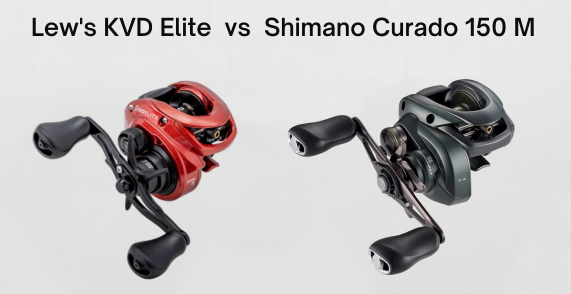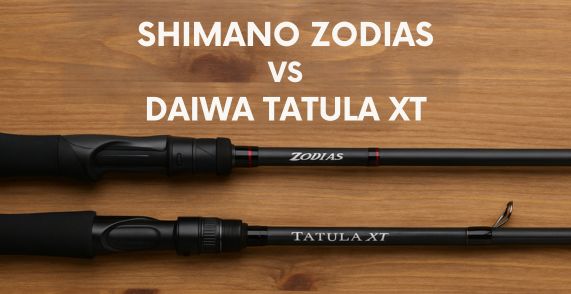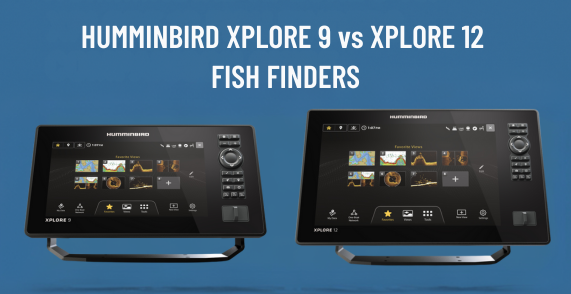In This Post
- 1 Key Takeaways:
- 2 6-Foot Rods: The Perfect Match for Kayak Anglers
- 3 Why Size Matters in Kayak Fishing
- 4 Tactical Advantages of 6-Foot Rods
- 5 Performance Benefits in Real Fishing Situations
- 6 Selecting the Right 6-Foot Rod
- 7 When Longer Rods Might Be Preferable
- 8 The Ultimate Kayak Fishing Advantage: Why 6-Foot Rods Win
Key Takeaways:
- Six-foot fishing rods provide optimal maneuverability in tight spaces, making them ideal for fishing around docks and under mangrove overhangs from a kayak.
- The seated position in kayak fishing creates unique challenges that shorter rods address by preventing ergonomic issues and allowing for proper hook-setting leverage.
- Shorter rods deliver superior casting accuracy for targeting specific structure and enable more effective skip casting techniques.
- While six-foot rods excel in precision fishing scenarios, longer rods may be preferable when distance casting is required in open water.
6-Foot Rods: The Perfect Match for Kayak Anglers
Choosing the right fishing rod for kayak angling isn’t just about personal preference—it’s about maximizing your effectiveness on the water.
While many anglers default to longer rods for their perceived advantages, six-foot rods offer unique benefits that make them exceptionally well-suited for the challenges of kayak fishing.
The compact nature of kayaks creates fishing scenarios unlike those encountered on larger vessels or from shore.
Your equipment needs to work efficiently within limited space while still providing the performance needed to target and land fish effectively. This is where the six-foot rod truly shines.
Why Size Matters in Kayak Fishing
The Seated Position Challenge
Kayak fishing fundamentally differs from other angling methods because you’re predominantly seated. This position significantly changes how you cast, set hooks, and fight fish.
Longer rods often create awkward angles when casting from a seated position, with their extended butt sections interfering with your body movements.
A six-foot rod eliminates these ergonomic issues by providing proper leverage without the awkward positioning. The shorter length allows for a more natural casting motion that works with your body rather than against it.
Space Limitations in a Kayak
The confined cockpit of a kayak means every piece of equipment must earn its place. Longer rods can be cumbersome, frequently catching on gear, paddles, or even the kayak itself during crucial moments.
Six-foot rods stay within your control zone, reducing the risk of tangles or accidental contact with your surroundings.
This compact profile becomes particularly valuable when you’re navigating tight waterways or fishing in areas with overhanging vegetation.
The shorter rod allows you to make precise casts without worrying about your rod tip hitting obstacles.
Ergonomic Considerations for All-Day Comfort
Anglers often underestimate the impact of rod length on fatigue during a full day of fishing. The balance point of shorter rods typically falls closer to your natural grip position, resulting in less strain on your wrists and forearms.
This improved ergonomic profile helps you stay comfortable and focused through extended fishing sessions.
Additionally, the reduced weight of a shorter rod decreases the effort required for repeated casting. Over the course of hundreds of casts, this weight difference becomes significant, allowing you to fish longer with less fatigue.
Tactical Advantages of 6-Foot Rods
1. Superior Maneuverability in Tight Spaces
The tactical advantage of a six-foot rod becomes immediately apparent when fishing around structure. Whether you’re targeting docks, mangrove overhangs, or fallen trees, the shorter length gives you the freedom to make casts that would be impossible with longer rods.
You can easily flip baits under low-hanging branches or skip lures under docks without your rod tip catching on obstacles.
This maneuverability is crucial in environments where fish seek shelter among complex structures. The ability to place your lure precisely in these high-percentage areas often makes the difference between a successful day and coming home empty-handed.
2. Enhanced Casting Accuracy for Structure Fishing
When it comes to precision fishing, accuracy trumps distance every time. Six-foot rods excel at pinpoint casting, allowing you to hit small targets with remarkable consistency.
This precision becomes invaluable when targeting specific structure such as individual pilings, tree roots, or submerged rocks where predatory fish typically hold.
The physics behind this improved accuracy is simple: shorter rods create less tip movement during the casting motion, resulting in tighter loops and more predictable lure placement.
When you’re trying to place a lure within inches of a specific target, this control is invaluable.
3. Improved Skip Casting Capabilities
Skip casting—the technique of bouncing lures across the water’s surface to reach under docks or overhangs—is one of the most effective ways to reach fish in otherwise inaccessible areas.
A six-foot rod is the perfect tool for this specialized technique.
The shorter length allows you to keep the rod parallel to the water when executing the sidearm casting motion necessary for effective skipping.
This lower profile helps prevent the rod tip from hitting the water during the cast, which would kill your momentum and ruin the skip. With practice, you’ll be able to send lures skittering far under cover where larger rods simply can’t reach.
4. Better Leverage When Fighting Fish
Contrary to popular belief, shorter rods often provide better fighting leverage, especially in the confined space of a kayak.
The six-foot length allows you to keep your elbows tight during hook sets, transferring maximum power directly to the hook.
When a fish makes a sudden run or dive, a shorter rod gives you the mechanical advantage needed to turn its head quickly before it can reach nearby structure.
This control is crucial in preventing break-offs and maintaining the upper hand throughout the fight.
Performance Benefits in Real Fishing Situations
1. Fishing Around Docks and Overhangs
Docks are fish magnets, offering shade, structure, and often a concentration of baitfish. A six-foot rod shines in these environments, allowing you to skip lures far under the dock where the biggest fish typically hold.
The short rod length enables you to make sidearm casts without your rod tip hitting the dock, water, or your kayak.
The compact length also proves advantageous when fighting hooked fish, giving you the leverage to pull them away from pilings before they can wrap your line around structure.
This combination of casting precision and fighting power makes six-foot rods the preferred choice for serious dock fishermen.
2. Working Through Mangroves and Vegetation
Mangrove shorelines and vegetated areas present unique challenges that six-foot rods are specifically equipped to handle. The shorter length allows you to make accurate pitches and flips into small pockets of open water surrounded by vegetation.
When a fish strikes in these dense cover situations, the compact rod gives you the necessary leverage to immediately pull it away from entanglements.
This decisive power in the early seconds of the fight often determines whether you’ll successfully land the fish or end up with a break-off.
3. Handling Fish from a Seated Position
The dynamics of fighting fish from a seated position in a kayak differ significantly from standing on a boat or shore.
A six-foot rod reduces the risk of high-sticking—lifting the rod beyond a 45-degree angle—which is a common cause of rod breakage when a fish dives directly under your kayak.
The shorter length keeps the rod’s arc within a safe range, allowing you to apply steady pressure without over-flexing the rod blank.
This controlled pressure tires fish more effectively and gives you greater authority throughout the fight, even when dealing with larger species.
4. Reducing Fatigue During Long Sessions
Kayak fishing often involves long days on the water, and equipment-induced fatigue can significantly impact your performance.
Six-foot rods typically weigh less than their longer counterparts, reducing arm and wrist strain over hundreds of casts.
The balanced feel of a properly designed six-foot rod places less stress on your joints and muscles, allowing you to fish longer with greater focus and effectiveness.
This reduced fatigue factor becomes increasingly important during multi-day fishing trips or tournaments when endurance is critical.
Selecting the Right 6-Foot Rod
Optimal Action and Power Ratings
Not all 6-foot rods are created equal, and finding the right action and power rating is crucial for kayak fishing success.
Medium action rods with moderately forgiving tip sections offer the ideal balance for most kayak applications. This action provides enough sensitivity to detect subtle bites while maintaining the backbone needed to control fish effectively.
The medium action also compensates for the seated position’s limitations by providing extra flex during hook sets.
When fishing from a kayak, you can’t use your legs to drive power into the hook set as you would when standing, making this forgiveness in the rod blank particularly valuable.
For power ratings, medium to medium-heavy options typically perform best for all-around kayak fishing. These provide:
- Enough strength to handle larger fish
- Suitable backbone for effective hook penetration
- Adequate power for working lures properly
- Sufficient durability for the rigors of kayak fishing
Lighter power ratings may be appropriate for finesse techniques or smaller species, while heavier ratings become necessary when targeting large predators around heavy structure.
Balance Point and Weight Considerations
The balance point of your rod significantly impacts comfort and performance during long fishing sessions. A well-balanced 6-foot rod distributes weight evenly, with the balance point falling close to your natural grip position. This reduces fatigue and improves casting accuracy.
Look for rods specifically designed with kayak fishing in mind, as these often feature:
- Shortened butt sections to prevent interference with your body
- Lightweight materials to reduce overall weight
- Thoughtful component selection to optimize balance
- Comfortable grip materials that perform well in wet conditions
The parabolic bend profile of quality 6-foot rods distributes stress evenly throughout the blank during a fight, preventing weak points that could lead to breakage.
This design characteristic is especially important when fighting strong fish from the unstable platform of a kayak.
When Longer Rods Might Be Preferable
Open Water Casting Distance Needs
While 6-foot rods excel in many kayak fishing scenarios, there are situations where longer rods (6.5-8.5 feet) hold distinct advantages. When fishing open water environments like flats, large lakes, or coastal areas, casting distance often becomes a priority.
Longer rods provide mechanical advantages for distance casting through:
- Increased leverage during the casting motion
- Greater rod loading potential to propel lures farther
- More efficient energy transfer to the lure
- Ability to manage more line off the water during casts
If your kayak fishing primarily involves covering large areas of open water or making long casts to avoid spooking shallow-water species, a longer rod may serve you better despite the trade-offs in maneuverability.
Specific Techniques Requiring Longer Rods
Certain fishing techniques benefit significantly from longer rod lengths. When trolling from a kayak, longer rods help separate multiple lines and provide better lure action.
Similarly, techniques like float fishing often work better with added length to manage line and control drift.
Longer rods also provide advantages when fighting fish that circle your kayak.
The additional reach helps guide the line around the bow or stern, preventing tangles and maintaining pressure from awkward angles. This can be particularly important when targeting species known for circling tactics or making powerful runs.
For specialized situations like surf launching or fishing in current, the additional leverage of a longer rod helps control both your kayak and your presentation.
The decision ultimately depends on matching your primary fishing environment and techniques to the appropriate tool.
The Ultimate Kayak Fishing Advantage: Why 6-Foot Rods Win
After weighing all factors, 6-foot rods emerge as the ideal choice for most kayak fishing applications.
Their perfect balance of maneuverability, accuracy, and control addresses the unique challenges of fishing from a kayak’s confined, seated position.
The tactical advantages of shorter rods—superior casting accuracy, improved skip casting capability, better leverage when fighting fish, and reduced fatigue—directly translate to more fish in the kayak.
While longer rods have their place in specific scenarios, the versatility of a quality 6-foot rod makes it the cornerstone of most successful kayak anglers’ arsenals.
The evidence is clear: when fishing structure, working tight spaces, or battling fish in close quarters, nothing outperforms a purpose-designed 6-foot rod.
Their compact size integrates seamlessly with the kayak fishing experience, allowing you to focus on what matters most—finding and catching fish in environments that larger vessels can’t access.
For kayak anglers looking to maximize their effectiveness on the water, a 6-foot rod isn’t just a good option—it’s often the perfect tool for the job.
The combination of control, accuracy, and fighting power in a compact package makes these specialized tools highly effective for successful kayak anglers across all fishing environments.







